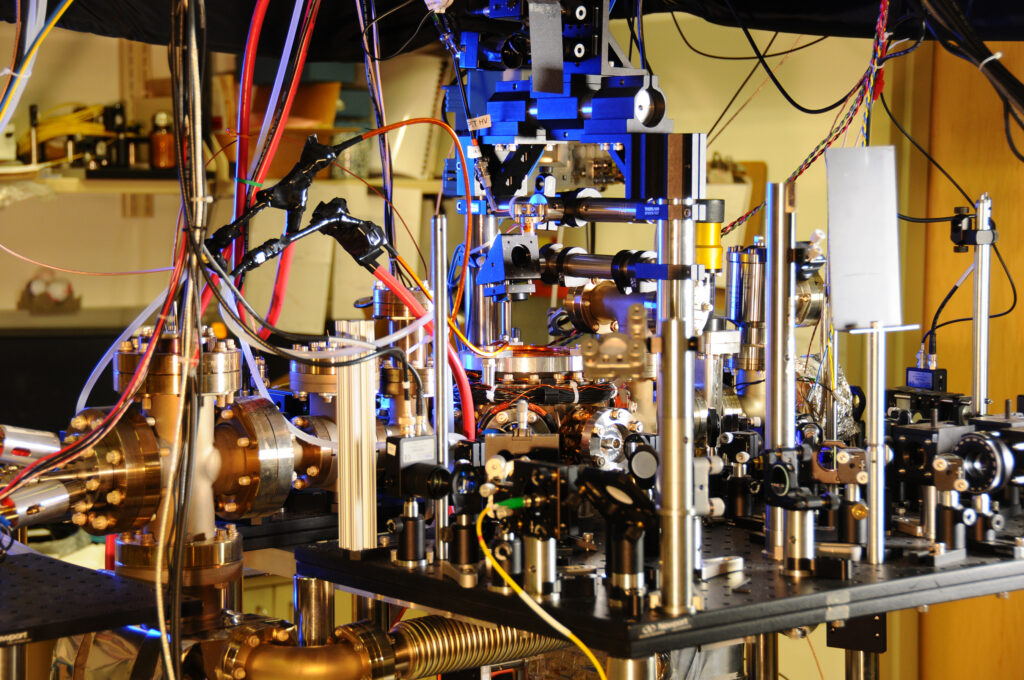
Credit: James Burrus, NIST
It’s the all-familiar story again: at the heart of human and panda civilization, a clock ticks away the fabric of spacetime and paces the world. We’ve seen it happen in antique shops, movies, bamboo forests and childhood memories, the only difference being that now the clock runs 9 billion times faster.1 Instead of a pendulum and an old rusty dial, the machine lies in a tangle of optical fibers and is surrounded by the soothing buzz of high-tech equipment. The device that has been evolving for centuries on end has now become so accurate that it was recently utilised to test the predictions of string theory.
The high frequency of atomic clocks is not only perfect for setting the universal time standards but can also give us a peek at the world of ultralight bosonic dark matter. The proposed particles possess a mass of less than 1 eV/c2, which corresponds to a de Broglie wavelength that could cover up a whole planet.2 But surely, if such bosons truly exist, they must intervene with the world around us?
Indeed, one of the predictions of string theory is that the interactions between ultralight dark matter and particles from the Standard Model should lead to changes in some fundamental constants such as the fine-structure constant,2 a prospect that would have made Paul Dirac incredibly happy. Over 80 years ago, the English physicist noticed a curious similarity between the age of the Universe and the ratio of gravitational and electrostatic forces between elementary particles. This relationship led to his Large Number Hypothesis (LNH): the idea that physical constants should slightly change as the Universe grows older.3 Unfortunately for him and for many string theorists, such shifts have never been observed, and recent searches with hypersensitive atomic clocks that can measure changes in the fine-structure constant to a great precision have also come to no avail.2
References:
- Schmittberger BL, Scherer DR. A Review of Commercial and Emerging Atomic Frequency Standards. IEEE Trans. Ultrason. Ferroelectr. Freq. Control. 2021 June;68(6):2007-2020.
- Filzinger M, Dörscher S, et al. Improved Limits on the Coupling of Ultralight Bosonic Dark Matter to Photons from Optical Atomic Clock Comparisons. Phys. Rev. Lett. 2023 June 22;130(25): 253001- 253007. https://link.aps.org/doi/10.1103/PhysRevLett.130.253001
- Prestage JD, Tjoelker RL and Maleki L. Atomic Clocks and Variations of the Fine Structure Constant. Phys. Rev. Lett. 1995 May 1;74(18):3511-3514. https://link.aps.org/doi/10.1103/PhysRevLett.74.3511
P.S. For a light read on atomic clocks, go to 1. above. If you want to dive deep into the bamboo forest, tackle 2. or 3.

